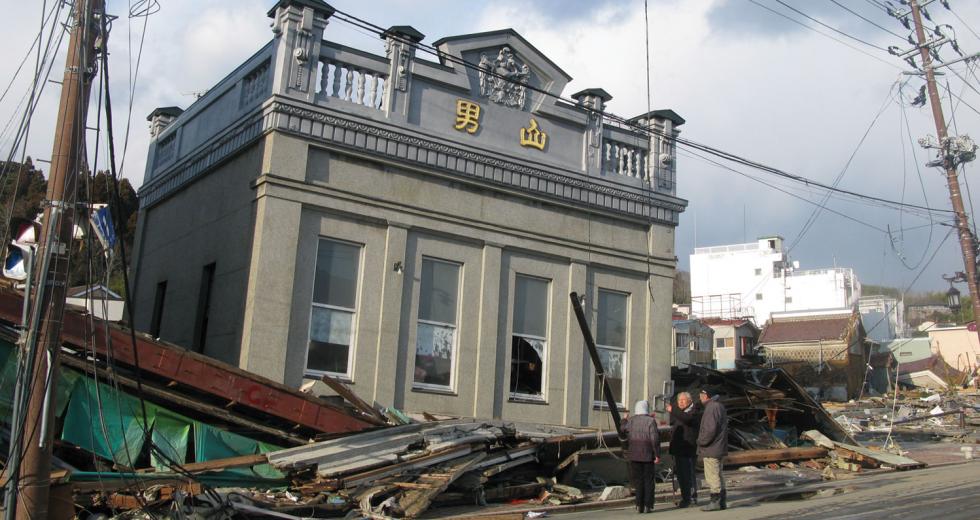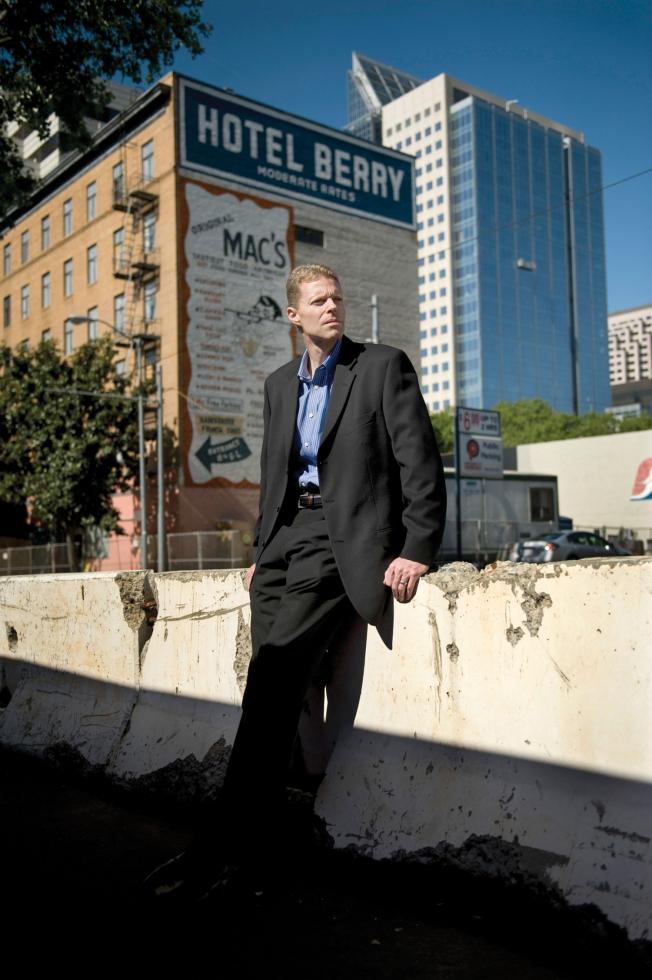The scenes of twisted metal, splintered wood, crumbling brick and flooded streets are still vivid to Kit Miyamoto, a Sacramento-based engineer who follows earthquake destruction around the world. But he’s not just seeing these images in Haiti, Chile or Japan.
These are the prescient scenarios of California after a major earthquake and forceful tsunami. And for Miyamoto and many engineers, the March earthquake and ensuing tsunami in Japan were a painful reminder: In California, it’s not if; it’s when.
“We will lose thousands of people. I would bet money on it,” says Miyamoto, president and CEO of Miyamoto International Inc. He says the possibility of an 8.0-magnitude earthquake striking the Bay Area is guaranteed within the next 10 to 30 years, potentially causing thousands of deaths — some of them children in classrooms — and billions of dollars in damages.
And Sacramento residents have a false sense of security.
“Sacramento would be affected too because we have lots of soft soil that will be liquefied,” he says.
The best labs for studying the effects of earthquakes are the events themselves. Many engineers are still studying the earthquake centered about 80 miles east of Sendai, Japan, its effects on buildings, infrastructure and people, and how a similar event would play out on the West Coast of the U.S.
The Great East Japan Earthquake reached 8.9 on the Richter scale, making it the most powerful temblor to hit Japan and one of the five biggest earthquakes since civilization started recording seismic activity in 1900. The earthquake triggered a tsunami with waves of up to 125 feet. The twin disasters took an estimated 30,000 lives, damaged or destroyed more than 125,000 buildings, cut off roads and railways and caused fires and a dam collapse.
About 4.4 million households were left without electricity and 1.5 million had no water. In all, the cost of repairs could top $300 billion, making it the most expensive natural disaster in history.
Engineering experts make many similarities between Japan and California when it comes to earthquakes. Structures and building codes are comparable, along with education and awareness about engineering techniques to prevent damage and loss of life. In many cases, Japan was better prepared, especially for the tsunami that came crashing onto its coast.
Besides damage to buildings, California cities could be shut down, nuclear reactors or other key plants could be at risk, and rescue efforts could be hampered in an earthquake or tsunami, says Scott Hooker, vice president of Buehler & Buehler Structural Engineers Inc., a Sacramento engineering firm.
Japan’s quake will have impacts on the state’s building codes and public perceptions of safety, Hooker says. At the very least, many are seeing the recent destruction in Japan as a dire warning.
“As a citizen living in earthquake areas, our sense of security erodes a little bit when you see the pure devastation in Japan,” he says. “It’s disheartening to see the destruction. It’s been an eye-opener. This has important implications for our society. We get involved in our day-to-day activities and forget things. We have to remember what happened in Japan, can happen here.”
For the past 80 years, engineers have recorded damage and loss of life in major earthquakes, including recent events in California, Chile, New Zealand and Haiti. Besides the magnitude of the quake, experts look at the type of fault, the vertical accelerations, the proximity of the epicenter, the type of soil and the era of construction, among other variables.
Hooker says engineers studied the 1994 quake in Northridge, leading to interim safety measures.
“If you own a death trap, how could you not want to keep the occupants and your investment safe?”
Kit Miyamoto, president and CEO, Miyamoto International Inc.
“For a time, there was a moratorium on steel moment frame systems in hospitals after the Northridge earthquake,” Hooker says. “The earthquake’s effects led to design and detailing techniques, some of them adopted as building codes. These are used with regularity and confidence and have been a tremendous benefit to the public.”
In California, structures completed before the state updated its building code in 1976 are most at risk, especially unreinforced brick buildings, including schools, hospitals and high-rise apartments. So while newer buildings are built to endure earthquakes, the state needs to examine its inventory of existing buildings for vulnerabilities.
Unfortunately, it would be fiscally impossible to upgrade every substandard building, he says. But the state could mitigate many of the risks, especially “big-ticket items,” such as hospitals, schools and energy plants.
Miyamoto, who visited Japan after the recent quake, called for public and private dollars to go toward shoring up outdated buildings and key infrastructure and plants. He says property owners should take responsibility for seismic retrofitting of buildings.
“If you own a death trap, how could you not want to keep the occupants and your investment safe?” he says. “Property owners can then use the added safety measures as a marketing tool to businesses who want to protect their employees and avoid disruption of business.”
Over time, engineering design in earthquake country has shifted from just simply preventing building collapse. Instead, engineers are working toward a more holistic approach to design and evaluation of buildings, how they fit in with a city landscape and how quickly a city infrastructure can be operational after an event.
“Our codes are set up to preserve life and safety of people. That’s the fundamental goal,” Hooker says. “It doesn’t speak directly to property damage. The profession is moving toward more performance-based engineering. It’s a more sophisticated approach and gives a greater sense of assurance to property owners on how their building will perform and when they will be able to reopen for business.”
Stephen Pelham, president of Barrish Pelham & Associates Inc., says he expects changes to the state building code as a result of analysis of Japan’s earthquake.
“I feel like most of the buildings in California designed to contemporary codes would perform well, but as we view our older building inventory, there’s more concern, especially with unreinforced masonry and non-ductile concrete, which is a fancy term for brittle,” Pelham says. “Modern technology has allowed us to design buildings that bend but don’t break.”
Pelham says California’s building codes allow for damage to buildings but also allow for occupants to exit safely. He says recently introduced legislation would beef up retrofitting in hospitals and schools.
“Even if a building survives, if water and power are out and people can’t get in or out of affected areas, it means humans are still suffering,” Pelham says.
After the Northridge earthquake, engineers observed fractures in steel building joints, which led to large university testing programs and revised building codes. By studying the devastation of the Southern California earthquake, engineers discovered there was a weakness in the connections of beams to columns and now design steel-frame buildings with a joint that forces the shock of ground movement away from the column and into beams, Pelham says.
Hooker says many buildings in the Sacramento area were built in the late 1800s and early 1900s, especially in the downtown area. Like Christchurch in New Zealand, Sacramento is considered a low-seismic risk, but surrounded by the seismically high-risk San Francisco Bay Area, he says.
“Christchurch has a number of buildings similar to what we have in California and in the Sacramento area,” Hooker says. “Our older buildings are stiff, brittle, heavy and vulnerable to earthquakes. The real problem is our existing buildings. We’ve done a pretty good job of retrofitting, but we still had some spectacular failures in recent California events and we were surprised by some of them.”
He says the Hotel Berry in downtown Sacramento is a good example of an unreinforced masonry building that is slated for seismic safety retrofits.
“The profession is moving toward more performance-based engineering. It’s a more sophisticated approach and gives a greater sense of assurance to property owners.” —Scott Hooker, vice president, Buehler & Buehler Structural Engineers
In fact, Japan was more prepared than California for an earthquake, Hooker says.
“The technical knowledge and design techniques in Japan are some of the best in the world,” he says. “It points out the shortcomings we have in California.”
Miyamoto says Japan had almost 2,000 buildings equipped with high-performance technology for preventing damage and loss of life, while California has only 200 buildings with the best technology.
Miyamoto says most of the deaths in Japan resulted not from building collapse, but from the tsunami floods, another disaster that could strike the California coast. Japan’s 16-foot sea walls were inundated by waves towering 32 to 125 feet, and wood structures were splintered on impact with floodwaters reaching as far as six miles inland.
“An earthquake off the coast of California could cause almost the same results as in Japan,” Miyamoto says. “A similar event offshore of Monterey’s sea shelf, essentially an underwater landslide, could generate the same tsunami force or higher.”
California has plenty of wood structures also, Miyamoto notes. In fact, parts of California’s building landscape resembles Haiti with its one-story wood buildings. He found 10 percent of Haiti’s older concrete buildings collapsed or were severely damaged, which could be similar to California’s rate.
“When we look at new construction, we should look at the design of wood structures,” he says. “There are cities and towns of wood structures in Japan that have disappeared from Earth. They are gone.”
Miyamoto says California should also look into a tsunami warning system, which he estimates saved more than 200,000 people in Japan during the recent quake.
Some simple no-nonsense engineering and public policy decisions would mitigate risk and damage from a severe earthquake, Miyamoto says. For example, Japan was diligent by building sea walls to keep tsunami waves at bay, taking investments of time and money. But engineers then depended too heavily on their arbitrary predictions, which led to the nuclear accident at the plant in Fukushima.
“They built a huge sea wall, but they never imagined the tsunami could top it, so they put the emergency generator for the nuclear plant in the basement,” Miyamoto says. “For $2 million more, they could have put the generator on higher ground and prevented the disaster. As engineers, we need to question ourselves and our decisions. What if we’re wrong? Engineers need to be better thinkers.”
Pelham says the months following the Japanese earthquake are valuable opportunities for public policy changes as the damage and deaths are still fresh in people’s minds.
“We have the potential of billions of dollars of damage and many lost lives,” he says. “We need to put some public muscle and money behind this important issue.”
Recommended For You

Where is Kit Miyamoto now?
Still standing on solid ground
Then:
As our cover boy in January 2006, Kit Miyamoto discussed the “Miyamoto Way” of doing architectural engineering. Engineering, he said, is logic. It’s black and white. However, he added that logic can be applied creatively in many development disciplines.




